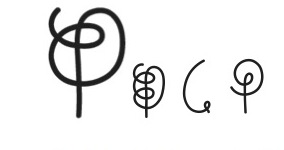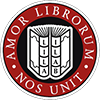italiano english deutsch español português pусский home
 Rome, an unspecified day in September 1976
Rome, an unspecified day in September 1976
I was 27 and was using colored pencils and a sketch pad to draw several hybridized human bodies with prostheses in the shape of claws, a bicycle wheel and a fountain pen, as if I were at the cyborg-nude figure drawing school of some Academy of Spatial Fine Arts.
I sketched the images along more or less taxonomic lines, and at one point it dawned on me that I needed something in writing to be able to complete my drawing, which was becoming increasingly similar to the page from an atlas of comparative anatomy. But what sort of captions could I add to it, and more importantly, in what language? The combining of a text and an image, we all know, generates a semblance of meaning, even if we understand neither the one nor the other. Do you remember how, when we were children, we’d leaf through picture books and, pretending we could read before the children older than us, fantasize about the images we saw there? Who knows, I thought to myself, perhaps unintelligible and alien writing could make us all free to once again experience those hazy childhood sensations. At the time the quest for this new alphabet seemed to me to be the most urgent thing that had to be done. Actually, I had to invent one that suited my hand.
So I began by scribbling lines that twisted and curved in curlicues and arabesques. And from that tangle of ink I slowly distilled a calligraphy complete with upper and lower case letters, punctuation and accents. It was script that contained the dream of many other types of script.
I continued to draw and almost unwittingly I made the first plates of the Codex, discovering in my new way of writing a felicitous automatism that the Surrealists would have appreciated.
One afternoon Giorgio, a friend from college, came by with several ideas for an evening out. Lost in my thoughts I told him I couldn’t join him because I was busy working on an encyclopaedia. It was an illumination.
Day after day I would slip into the shoes of an amanuensis segregated in the scriptorium of some monastery, with tomes by Aristotle and Plato to be copied lying on my desk.
This feverish state was to last about three years. To manage to make ends meet I would occasionally collaborate with a number of architects, and it was thanks to the work I did for them that the painstaking accuracy of technical drawing and the depth of the India ink contaminated the plates of my Codex.
My scriptorium was on the top floor at Via Sant’Andrea delle Fratte no. 30, not far from Piazza di Spagna, in a dilapidated building whose peperino steps had been worn down by centuries of use. A stone’s throw away was the cloister of the church of Sant’Andrea delle Fratte, with its cypresses and orange trees. At the center was a tub with chubby, almost motionless goldfish, and a sort of rock formation covered in moss and maidenhair fern oozing droplets of water. Situated at the crossing between Via della Mercede and Via di Propaganda was the house where Bernini had lived, and close to the front door his elegant marble bust had to put up with the presence of two masterpieces by his eternal rival Borromini standing just a few feet away.
It seems hard to believe today but those were the last years when the Rome of the Trident still resembled the city that had been seen by the Romantics of the Grand Tour, so much so that the houses where Keats and Goethe had lived appeared to be patiently awaiting their return. In the morning cascherini (breadboys, TN) sang as they zigzagged on their bicycles with baskets of fresh bread ready to deliver. In the trattorias the only wine they served was Frascati, while Babington’s Tea Room was the only exotic note behind five very tall palm trees. So-called modern life struggled to penetrate the alleyways and courtyards where large feline colonies devoured the leftovers that every now and then someone would toss from a window. De Chirico was painting his very last western suns whose herringbone rays crept across the wooden floor of his studio in Piazza di Spagna, while in the evening Fellini, hands in pocket, would return to his home on Via Margutta after a long hard day at Cinecittà.
But darkness was also descending on the Arcadia. A year earlier Pasolini had been murdered, and leaded clouds had been gathering for some time in the terse Capitoline air, the ominous signs of impending doom.
My scriptorium also had a small terrace close to the water tanks made of fiber cement, and from there I could see the parasol pines of Villa Medici in the distance. As dusk fell, pigeons would land on the peeling parapet to feast on the bread-crumbs I offered them in abundance. In return I received the news of the day through the cooing sounds and flapping
of the wings that I managed to understand thanks to the teachings of my grandmother, who was Umbrian and familiar with their language. As for food, I was surviving on pizza margherita or capricciosa with hard-boiled eggs, which I ate at a pizzeria on Via del Leoncino.
One night, as I was on my way home after dinner, I ran into a white cat that was meowing and roaming around at the corner between Via Condotti and Via Belsiana. It looked like a stray so I took it home with me and we lived together until the Codex had been completed.
I would spend most of my time drawing the future pages of my book, sitting at a table set upon a sawhorse with two windows in front of it. The cat would take advantage of this to clamber onto my shoulders, nestling there as it purred away. Then it would fall asleep with its tail hanging down on my chest, at times to the right, at others to the left, moving every now and then depending on whatever it was dreaming.
Many years later I happened to read Pushkin’s poem Ruslan and Lyudmila. In the prologue the poet describes a scholarly cat that walked along a golden chain hanging down from an oak tree. If the cat ambled to the left, it would tell a folktale, if it ambled to the right, it would sing a song. In those verses I noticed some striking analogies with my own cat, and I wondered if by chance it might not have transmitted its songs and folktales to me as it sat there motionless for hours on my shoulders, in contact with my hypophysis. Evidently, they were songs and folktales that I thought were my own fantasies… How else could I account for so many drawings in so little time, although I do realize that all this might sound rather bizarre.
In conclusion, based on the thoughts mentioned above and others that I’ll put aside for personal reasons, I must confess that the true author of the Codex was the white cat, and not I, even though I have always passed myself off as being the author, whereas I was merely its manual executor.
Since, for copyright reasons, I could not make the present confession until now, I take this opportunity to express, with my Publisher’s permission, my sincerest gratitude to the Cat, in memoriam.
Luigi Serafini
Rome, July 3, 2013, 12:30:00 p.m.
Traduzione verso l’inglese di Sylvia Notini



